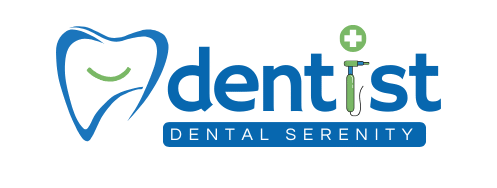Gingivectomy / Frenectomy
Gingivectomy and frenectomy are two dental procedures aimed at addressing issues related to the gums and soft tissues in the mouth. Both procedures are important for improving oral health and function but are performed for different reasons. Gingivectomy is focused on the removal or reshaping of gum tissue while frenectomy deals with the removal or modification of the frenulum. Both treatments can be performed for both functional and cosmetic reasons, improving the health and appearance of the gums and soft tissues.
What is Gingivectomy?
Gingivectomy is a surgical procedure that involves the removal of gum tissue to address issues like gum disease, excessive gum growth, or to improve the appearance of the smile. The procedure is often performed when a patient has gum disease such as periodontitis, which causes the gums to become infected and swollen, leading to deep pockets between the teeth and gums. Gingivectomy is used to remove diseased tissue and reduce the size of these pockets, making it easier to clean the teeth and gums and prevent further infection.
In addition to its functional benefits, gingivectomy can also be performed for aesthetic purposes. A “gummy smile,” where excessive gum tissue makes the teeth appear smaller, can be addressed with this procedure. By reshaping the gumline, the dentist can expose more of the tooth surface, giving the smile a more balanced and natural appearance.
Why is Gingivectomy Needed?
Gingivectomy is needed in cases of gum disease when the tissue around the teeth becomes infected or overgrown. The procedure can be necessary for the following reasons:
-
Treatment of Gum Disease: In cases of periodontal disease, gingivectomy helps reduce gum inflammation and eliminate infected tissue, allowing the gums to heal and reducing the risk of further damage to the teeth and bone.
-
Excessive Gum Tissue: For individuals with excessive gum tissue, such as those with a gummy smile, gingivectomy can help reshape the gumline and improve the aesthetic appearance of the smile.
-
Improved Oral Hygiene: When excessive gum tissue makes it difficult to maintain proper oral hygiene, gingivectomy can make it easier for the patient to clean their teeth and gums, reducing the risk of cavities and gum disease.
How is Gingivectomy Performed?
Gingivectomy is typically performed under local anesthesia, ensuring that the patient remains comfortable during the procedure. The dentist or periodontist uses specialized instruments such as a scalpel or laser to remove the excess gum tissue. The procedure may be done on a single tooth or multiple teeth, depending on the severity of the condition.
If gum disease is present, the dentist will clean the affected areas to remove plaque and tartar before reshaping the gums. After the tissue is removed, the area is cleaned and, if necessary, sutured to promote proper healing. Recovery times vary, but most patients experience mild discomfort and swelling for a few days following the procedure.
What is Frenectomy?
A frenectomy is a surgical procedure that involves removing or modifying the frenulum, a small band of tissue that connects the lip or tongue to the gums. There are two main types of frenectomy: labial frenectomy (removal of the frenulum connecting the upper lip to the gums) and lingual frenectomy (removal of the frenulum under the tongue).
This procedure is typically performed to treat issues such as tongue-tie or lip-tie, conditions where the frenulum is too tight and restricts movement. A frenectomy can also help resolve functional issues like difficulty with speaking, swallowing, or breastfeeding, which can occur when the frenulum restricts normal tongue or lip movement.
Why is Frenectomy Needed?
Frenectomy may be required for a variety of reasons, including:
-
Tongue-Tie (Ankyloglossia): A lingual frenectomy is often performed to treat tongue-tie, a condition where the frenulum beneath the tongue is too tight, restricting the tongue’s movement. This can interfere with speaking, eating, or swallowing and can be particularly problematic for infants during breastfeeding.
-
Lip-Tie: A labial frenectomy is performed to treat lip-tie, a condition where the frenulum connecting the upper lip to the gums is too tight. This can cause difficulty with breastfeeding or contribute to gum recession and issues with oral hygiene.
-
Gum Recession: If the frenulum pulls too tightly on the gums, it can lead to gum recession, particularly along the lower front teeth. A frenectomy can help alleviate the tension on the gums and prevent further recession.
-
Aesthetic or Functional Reasons: A frenectomy may also be performed to improve the appearance of the lips or to address functional issues caused by the frenulum. This can help with speech, eating, or general comfort in the mouth.
How is Frenectomy Performed?
Frenectomy is a quick and straightforward procedure that can be performed under local anesthesia. In a lingual frenectomy, the dentist or oral surgeon makes a small incision in the frenulum beneath the tongue and removes the tissue. For a labial frenectomy, the procedure involves making an incision in the frenulum above the upper lip and either removing or modifying the tissue.
The procedure is typically performed with minimal discomfort, and recovery is usually fast. In some cases, laser technology is used for a more precise and less invasive procedure. Laser frenectomies often result in less bleeding and a quicker recovery time compared to traditional surgical methods.
Recovery and Aftercare
The recovery time for both gingivectomy and frenectomy procedures is generally short, and most patients can return to normal activities soon after the procedure. However, post-operative care is crucial to ensure proper healing and to avoid complications.
For gingivectomy, patients may experience mild discomfort, swelling, and bleeding after the procedure, but these symptoms usually resolve within a few days. It is important to follow the dentist’s instructions, including avoiding certain foods and maintaining proper oral hygiene.
For frenectomy, recovery is typically faster, with most patients experiencing minimal discomfort. However, it is important to avoid activities that may irritate the surgical site, such as eating hard or spicy foods. The dentist will provide specific aftercare instructions to ensure that the wound heals properly.
Benefits of Gingivectomy and Frenectomy
Both procedures offer significant benefits in terms of functionality and aesthetics. Gingivectomy helps improve oral hygiene by removing infected or excess gum tissue, enhancing the appearance of the gums, and preventing the progression of gum disease. It also provides a solution for cosmetic concerns such as a gummy smile.
Frenectomy offers functional benefits by treating tongue-tie or lip-tie, improving speech, eating, and overall comfort. It also helps prevent gum recession and supports better oral hygiene. The procedure can be done quickly with minimal discomfort and a short recovery time.
Conclusion
Gingivectomy and frenectomy are essential dental procedures that address issues related to the gums and soft tissues in the mouth. Gingivectomy helps treat gum disease and improve the appearance of the gums, while frenectomy addresses functional concerns related to the frenulum. Both procedures are minimally invasive, with quick recovery times, and can provide significant improvements in oral health and function. Whether for aesthetic, functional, or medical reasons, these procedures play a vital role in maintaining a healthy and comfortable smile.

